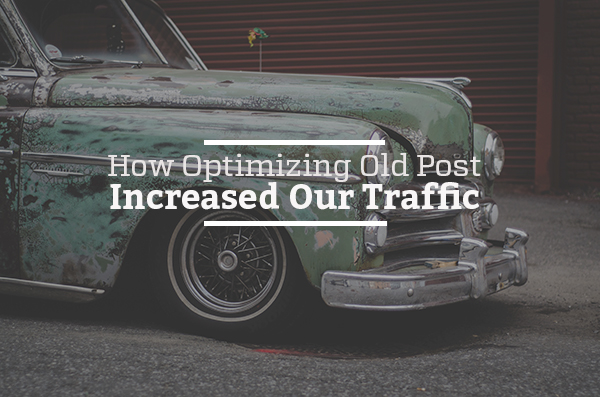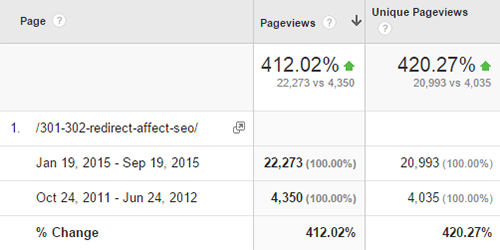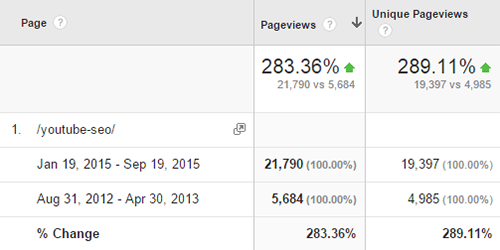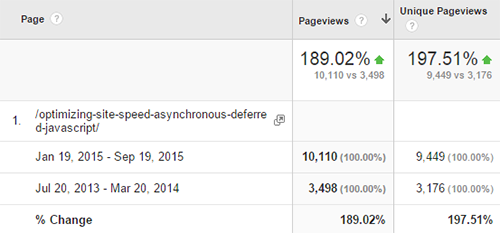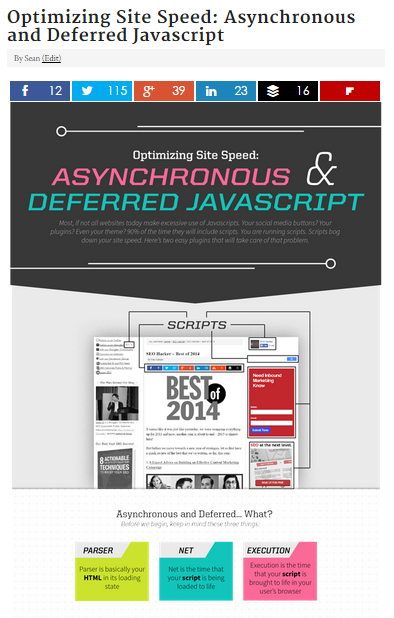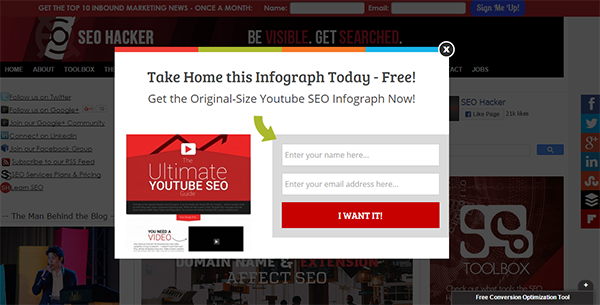How Optimizing Old Posts Increased Our Traffic by 884%
There are 2 kinds of marketers, as Pamela Vaughan described it. The first one hunts for one big idea, while the other one grows through pervasive optimization.
We used to be the hunters. However, as content drastically grew in terms of amount while the demand remained static, it has become harder to be the hunter.
“The supply of content is growing, but demand is static.” -Paul Hewerdine, Earnest
That’s when we learned to take advantage of what we already have.
The backstory
In August 31, 2012, we published one of our epic posts, The Ultimate Guide to Youtube SEO, in which during that time was ONE BIG IDEA because very few knows about SEO, moreover Youtube SEO.
And even though the blog was new and had very few traffic, we noticed that we’re getting good numbers of visits through that post.
We were happy and contented – we thought that’s more than enough.
Fast forward to January 2015, we decided to enhance three of the most successful guides (including the guide to Youtube SEO) we have ever published.
- How Does 301 & 302 Redirect Affect SEO?
- The Ultimate Youtube SEO Guide
- Optimizing Site Speed: Asynchronous and Deferred Javascript
The results
After modifying the posts, we saw a tremendous increase of pageviews.
1. How Does 301 & 302 Redirect Affect SEO?
Published date: October 24, 2011
Eight months since the post was published, from 4,193 pageviews (or 1.89% of the overall website traffic), its traffic grew to 23,116 pageviews – a whopping 412.02% increase.
2. The Ultimate Youtube SEO Guide
Published date: August 31, 2012
This post traffic from August 31, 2012 to April 30, 2013 reached to 5, 684, and increased by 283.36% from January 19, 2015 to September 19, 2015.
3. Optimizing Site Speed: Asynchronous and Deferred Javascript
Published date: July 20, 2013
Its traffic for eight months since it was published reached to 3,498 (or 2.41% of the overall website traffic) and grew to 10,110 pageviews – a 189.02% increase eight months after the update.
What we thought is enough traffic can actually be doubled, tripled or even more!
How we did it?
1. Identify the top performing content
The first step is to always find your top performing content, as you’ll more likely to see results from content that is gaining good amount of traffic. Also, if huge chunk of your traffic is coming from an old post, you know that it’s worth updating because people are still visiting it.
It doesn’t makes sense to update a content if people aren’t visiting it anymore, unless you will republish it, which is a different case.
2. Update the post
The second step is to update your post. Review your top performing content and check if there are outdated information and then update them.
You can also add supplementary media to make the post more recent. In our case, what we did is we added infographics.
For example, this is the original look of Optimizing Site Speed: Asynchronous and Deferred Javascript before it was updated.
And this is the updated version:
3. Conversion optimize the post
Aside from adding infographics, we also put popups that will allow visitors to download it. Like this:
And this:
Also, in the end of the post, readers can get the embed code if they want to use the infographic in their website or webpage.
4. Click the update button and promote
It may be an old post, but after you hit the ‘update’ button, it will be as amplified as a new content.
Share it on your social media pages and online communities, update those people who originally shared or linked to your content, and email your subscribers. Go crazy!
Why is this effective?
1. Google values freshness
Google wants to improve search because they want to give the best results to searchers, and they give importance to content that is not just written well, but is also fresh.
2. People are visual
You can update your content by just editing necessary information. However, because we know that people are visual, we decided to improve it the best way we can – including infographics.
3. We like free stuff
Giving away free infographic is not so bad, especially if you’re gaining traffic and recognition. It works for other companies too that gave away e-books. The point is we like free stuff, and we find it easier to give back when we received something.
So if you can give something to your audience, expect that they will give something to you too – like visiting your site over and over again.
4. It enhances the quality of content – we like quality!
We do like quality content! And Google likes it as well. In a fast paced world, with tons of available contents online, we can only give attention to content that is worthy of our time, and that is quality content.
Final thought
You can do the same thing for your posts. But before you do, here are a few good reminders to keep.
- This isn’t for everyone. Make sure that you have significant traffic to see significant results.
- This should only be one of your ‘many’ strategies, not the only one.
There’s nothing wrong with looking back. After all, our goal is to produce evergreen content, and one of the best ways to do this is to keep updating our old posts, making them like new. Because as long as your idea is gold, even though it’s old, it’s going to get sold.
